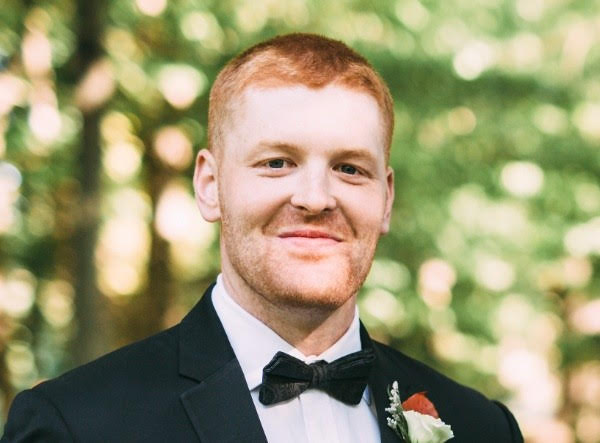It’s that time of year–yes, trend season is underway, my social media friends! You’re likely to see no fewer than 2.1 million trend posts between now and Dec. 31. ENJOY!
Most of these trend posts, mind you, will be complete and utter garbage. In fact, many of them are literally cut-and-pasted from last year’s trend posts. So, each year, I attempt to provide a little more meat to the trend discussion by sharing my own, pragmatic predictions based on real numbers and trend lines I’ve seen throughout the year. That post is coming in the next couple weeks.
In the meantime, I thought I’d ask some of the best and brightest in social media marketing in the Twin Cities what they think lies ahead. I asked six people working in social media marketing with some of Minnesota’s biggest and most successful companies this question. Here’s what they had to say:
Eric Ellis, Global Social Media Lead, Honeywell

Rather than concentrate on platform changes, or the new, “coolest” social media platform or enhancement, I’ll give you my thoughts on an evolution I’ve seen, somewhat Honeywell based perhaps, but something I’ve seen with some of my peers too.
Finally, I’m starting to see social media as an actual business driver. Of the platform trends and evolution of them, the advent of pay-to-play for brands has probably been the most impactful and emphasized the need to demonstrate ROI. Like any other pay-for medium, if brands are putting dollars behind the effort, they need to see the return. Which also leads to more sophistication like actual campaign tracking (UTM parameters, etc), adding social tracking devices to websites (pixels, etc), retargeting ads, etc. I’ve noticed a lot more questions from peers on how to add tracking efforts, so it appears that more brands are jumping in. Social is now, astonishingly, part of the marketing mix. One of my peers actually referred to social as “Demand Gen”, to which maybe was a tad too far. But, it means that the C-suite has finally put their money where their mouths are. Instead of just “being on social” because the cool kids were, or it was a brand risk to not be, we’re now getting funding to do it right.
Internally, I’m having less and less of the conversation with my work colleagues defending social as not a free medium. It’s now almost always a given that if my businesses want to put something up on social, it most definitely needs funding.
While we as social marketers have complained about all the algorithm changes and that it killed organic reach, we should be praising Zuckerberg and the others… what they actually did was make social media, dare I say, mainstream. We now have a seat at the grown up table. Gulp!
Social is no longer only about pretty pictures and “connecting” with your brand advocates, it’s driving business objectives, and not the fluffy “brand awareness” type.
Christina Milanowski, Social Media Manager, Regis Corp.

Keep an eye on your prose. 👁 📖
In today’s newsfeed, we have to grab attention literally in a matter of seconds. We’re competing with a deluge of other social content at a time when organic reach is nearing an all-time low.
How will you create thumb-stopping social in 2019? This is hard for a journalism major to admit, but cut the characters! Studies show we can communicate with emotion better through emojis, gifs and stickers. Bring your social presence to life through fewer words and more visuals.
Did you know 5B emojis are sent each day on Facebook Messenger? In 2019, we’ll see emoji keyboards expand to make it even easier to find relevant emojis for our social media posts and community management. We’re at 2,823 emojis and counting!
Recent stats show more than a quarter of internet users 18-34 actively use Giphy, which supplies gifs to Facebook, Twitter, Tinder, Slack, Twitch, and text keyboards. I predict more brands will build their own Instagram stickers and branded gifs.
With more than 400M daily users and relatively high engagement, Instagram Stories will be critical for organic and paid social media plans.
We’ve been talking about social video for a few years now—yes, focus on that! But, also (somehow) we’ll need to plan for videos to be even shorter. Think: 6- and 15-second videos.
Our focus on producing engaging content – augmented by short(er) video, disappearing stories, emojis and gifs – will be more important than ever.
David Jungers, Social Media Intelligence Manager, Optum

Ryan Roddy, Social Media Consultant, HealthPartners

Facebook, Amazon and/or Google will make an impactful move toward streaming live American professional sports.
At the end of the day, can’t they simply outbid Disney, CBS Corp and Comcast for broadcast rights? They platforms have been sliding into this space for a while now (Amazon with Thursday-night NFL and some Premier League games, Facebook with the MLB, MLS and Spanish soccer league, La Liga, Twitter with the NBA and WNBA, etc.), but I foresee something bigger in the coming year. Don’t get me wrong, Americans will bristle at the idea of spending fall weekends staring at a 5-in. screen vs. a 65-in. one, but I struggle to see this never happening. I think it’s just a matter of time.
On a more local level, if something like that comes to fruition, it’ll be interesting to see how it impacts the perception of social within agencies and corporate marketing departments. Currently, social seems to ride this fine line between marketing and PR/communications/branding at many organizations throughout the Twin Cities. Although mostly a Comms baby in the early days, marketing teams seem to be playing a bigger role now as achieving impact on social platforms increasingly depends on media dollars.
Lauren Lillehaug, Global Social Media Strategist, 3M

2019 will be an interesting year for social media data and targeting capabilities, particularly with the many companies that have come forward this year admitting to selling or losing protected personal data. Targeting capabilities never cease to amaze me (and creep me out) so I can only guess that 2019 will bring even more effective (maybe?) and creepier (absolutely) targeting capabilities and exploiting of said data. Even more interesting (scary?) will be to see how 2019 unfolds on the internet overall, with the repeal of net neutrality. This is a topic that could deeply affect the digital world in which we live in.
Caitlin Rick, Social Media Strategist, Explore Minnesota


0 Comments